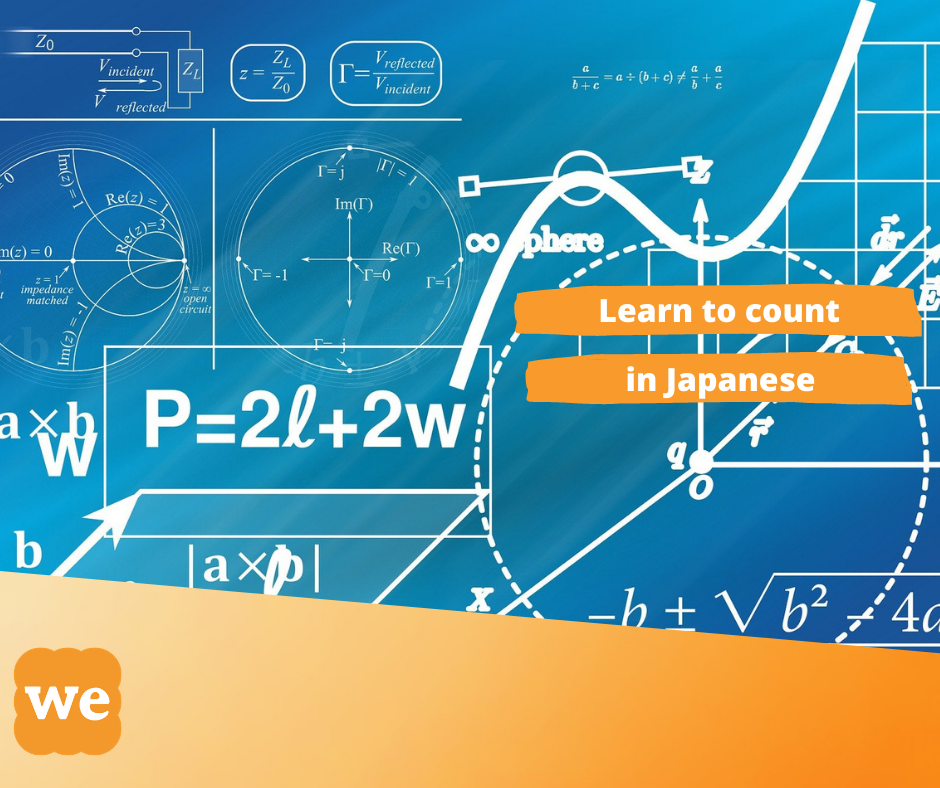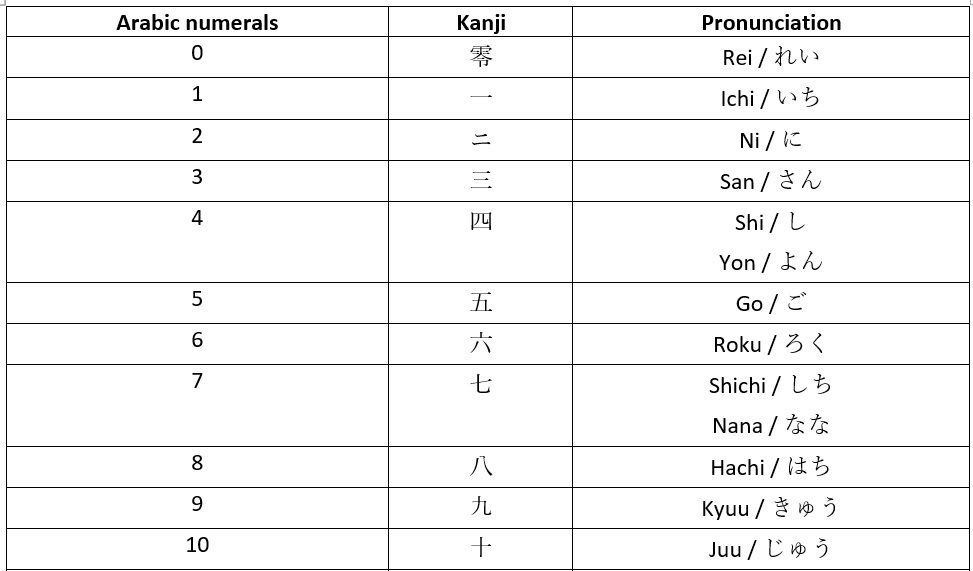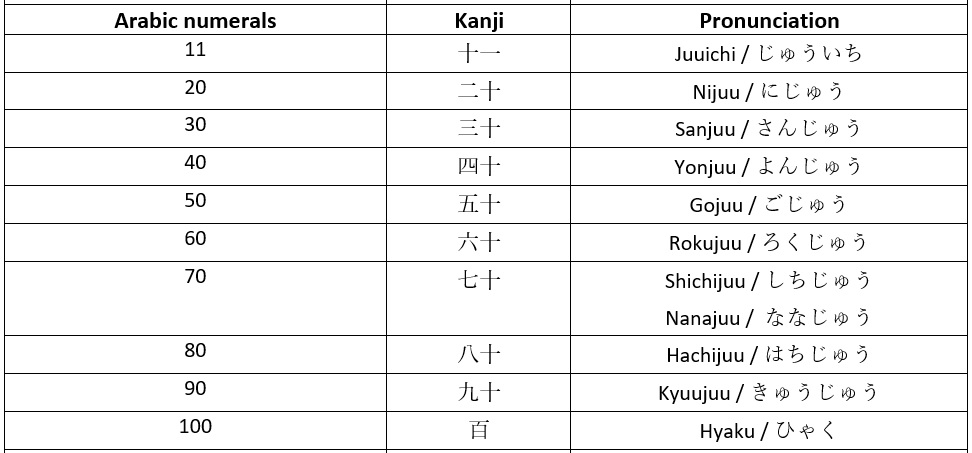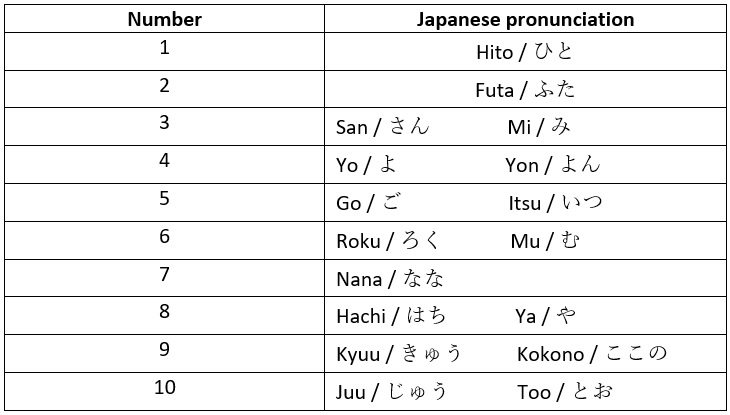
If you are learning Japanese and are a European language native speaker, you know it's hard to count. Japanese numbers have different pronunciations, and you have to use "counters". Counters are used based on the type of thing you are counting. There's one for objects in general, one for animals, one for people, one for dishes when asking for something to eat, and so on.
In this article, we will first explain Japanese numbers from 1 to one hundred million, focusing on their pronunciation.
In the second section, we will list the 5 of the most useful counters in the Japanese language.
Japanese Numbers - How do I Count to 10 in Japanese?
In Japanese, you can write numbers using Arabic numerals, or using kanji. Generally, Arabic numerals are used in horizontal writing, while kanji are commonly used in vertical one.
From 1 to 10, you can count following the pronunciation below:

Why do 4 and 7 Have Two Pronunciations?
In Japanese numbers 4 and 7 have two readings.
For number 4, you can say "shi" as well as "yon", when reading it alone. However, when they have to say composed numbers, like 40, most Japanese people prefer to use "yonjuu", because it's easier to say. Also, the word "shi" is a homophone of the word "death" (死・し). This is why number 4 is considered unlucky, and sometimes the 4th floor is missing in hospitals and hotels.
About number 7, the Chinese pronunciation is "shichi". This is very similar to "shi". Therefore, to avoid confusion, the Japanese pronunciation "nana" is preferred.
Japanese Numbers: Counting from 11 to 100

When counting from 11 to 19, you have to say first juu (ten), and then add the second number, like this:
11 → juu ichi じゅういち
14 → juu yon じゅうよん
19 → juu kyuu じゅうきゅう
However, from 20 to 99, the counting method changes. You will have to say 20 as 2 + 10, ni + juu = nijuu, and add the single number after it.
20 → nijuu にじゅう
21 → nijuu ichi にじゅういち
24 → nijuu shi / nijuu yon にじゅうし・にじゅうよん
99 → kyuujuu kyuu きゅうじゅうきゅう
For 100, there's a single word for it, ひゃく, hyaku (百).
Counting from 101 to 100.000.000: Pronunciation Exceptions
After 100, the counting method is the same. You add your composed number after saying "hyaku" or "sen".
101 → hyaku ichi ひゃくいち
158 → hyaku gojuu hachi ひゃくごじゅうはち
200 → ni hyaku にひゃく
1000 → sen せん (in kanji: 千)
2000 → nisen にせん
5287 → gosen nihyaku hachijuu nana ごせんにひゃくはちじゅうなな
However, there are some exceptions regarding their pronunciations, for numbers starting with 3, 6, and 8:
Number 300 is pronounced "sanbyaku" (さんびゃく); while 3000 is "sanzen" (さんぜん)
600 is pronounced "roppyaku" (ろっぴゃく)
800 is pronounced "happyaku" (はっぴゃく); 8000 is "hassen" (はっせん)
The Main Difference Between Arabic Numerals and Japanese Ones

Starting with 10,000, we can see an unusual change in counting, if you are a European native speaker. Instead of being separated by commas every three digits, Japanese numbers are separated every four digits. Therefore, number 10,000 = 万・まん, with 4 zeros, is divided like this: 1.0000.
Man will be combined with 10 to form juuman, (じゅうまん) 100,000 = 十万, with 5 zeros (divided → 10.0000). Following this logic, you have Hyakuman, (ひゃくまん) 1,000,000 = 百万, with 6 zeros, and then senman, (せんまん) 10,000,000 = 千万, with 7 zeros.
One hundred million has a single kanji, being oku ・億・おく.
What are Japanese Counters?
The Japanese language uses counters to count objects, animals, people, days, and others, following the example of the Chinese language. Saying the only number is not sufficient: after it, you can add the appropriate counter, as a suffix.
To better understand them, remember that in English too there's a similar concept. When saying "a pair of shoes", we use the word "pair", which is like a counter. Just remember to specify numbers when counting days, time, people, and basically everything.
The Other Pronunciation of Japanese Numbers
Before going further with counters, you need to know that Japanese numbers have two readings: one derived from Chinese, called onyomi, and the native Japanese reading, called kunyomi (for further explanation about Japanese writing and pronunciation system, check our article on how to learn the Japanese language).
The number's onyomi, the classic pronunciation of Japanese numbers (ichi, ni, san, ...), is used to say telephone numbers, or when they do not express an amount of something. When doing mathematical operations or saying the number of the platform at the station, for example.
The kunyomi, however, is used when a counter follows the number. Here's their generic pronunciation:

The pronunciation of the number changes depending on the counter following it.
5 Most Used Counters in Japanese Language
Finally, here are 5 of the most used counters in Japanese, and their pronunciation from 1 to 10.
つ tsu : this one is used when counting objects with no specific shapes, or objects in general. You can write both 1つ or 一つ with kanji. Pronunciation follows completely the Japanese one, like this: 一つ hitotsu (ひとつ), 二つ futatsu (ふたつ), 三つ mittsu (みっつ), 四つ yottsu (よっつ), 五つ itsutsu (いつつ), 六つ muttsu (むっつ), 七つ nanatsu (ななつ), 八つ yattsu (やっつ), 九つ kokonotsu (ここのつ), 十 too (とお), exception, without the counter following it.
人 nin : to count people. 1人 hitori (ひとり), 2人 futari (ふたり), 3人 sannin (さんにん), 4人 yonin (よにん), 5人 gonin (ごにん), 6人 rokunin (ろくにん), 7人 shichinin/nananin (ななにん), 8人 hachinin (はちにん), 9人kyuunin/kunin (きゅうにん), 10人 juunin (じゅうにん).
階 kai : is used to count building's floors. 一階 ikkai (いっかい), 二階 nikai (にかい), 三階 sankai(さんかい), 四階 yonkai (よんかい), 五階 gokai (ごかい), 六階 rokkai (ろっかい), 七階 nanakai (ななかい), 八階 hakkai (はっかい), 九階 kyuukai (きゅうかい), 十階 jukkai (じゅっかい).
日 ka : to count the days of the month. 1日 tsuitachi (ついたち), 2日 futsuka (ふうつか), 3日 mikka (みっか,) 4日 yokka (よっか), 5日 itsuka (いつか), 6日 muika (むいか), 7日 nanoka (なのか), 8日 yooka (ようか,) 9日 kokonoka (ここのか), 10日 tooka (とおか).
枚 mai : to count flat objects, like paper, shirts, plates. For this counter there are no exceptions in the pronunciations: 一枚 ichimai (いちまい), 二枚 nimai(にまい), 三枚 sanmai (さんまい), 四枚 yonmai (よんまい), 五枚 gomai (ごまい), 六枚 rokumai (ろくまい), 七枚 nanamai (ななまい), 八枚 hachimai (はちまい), 九枚 kyuumai (きゅうまい), 十枚 juumai (じゅうまい).
Thank you for reading!
Author: Valeria (graduated at Ca’Foscari University Japanese Studies)
Please register as a We member for free to join the conversation on this topic. Once registered, you'll receive a free interactive lesson as a gift to you!



We owe these beauties of the world to our greatest minds
– our Frank Lloyd Wrights, Gaudis, and Norman Fosters – and likelihood is,
you understand a mind that’s studied theirs.